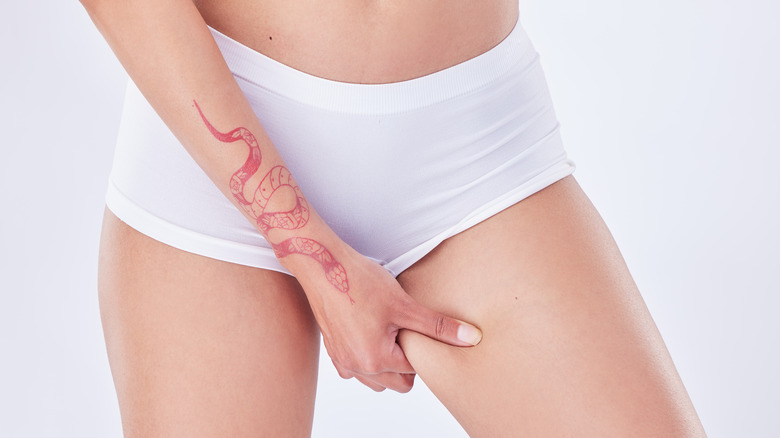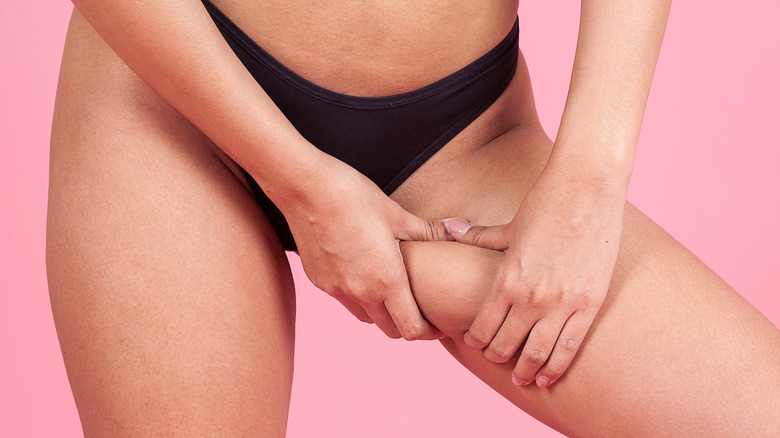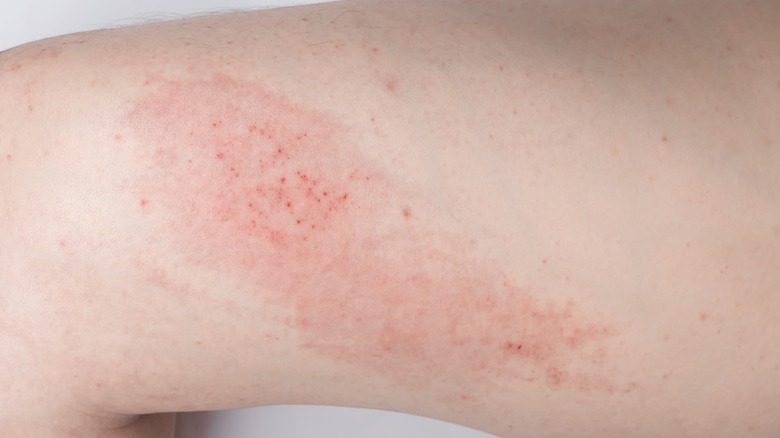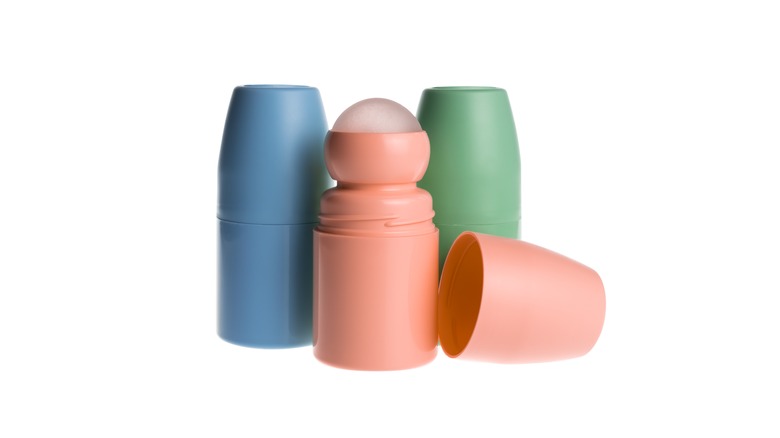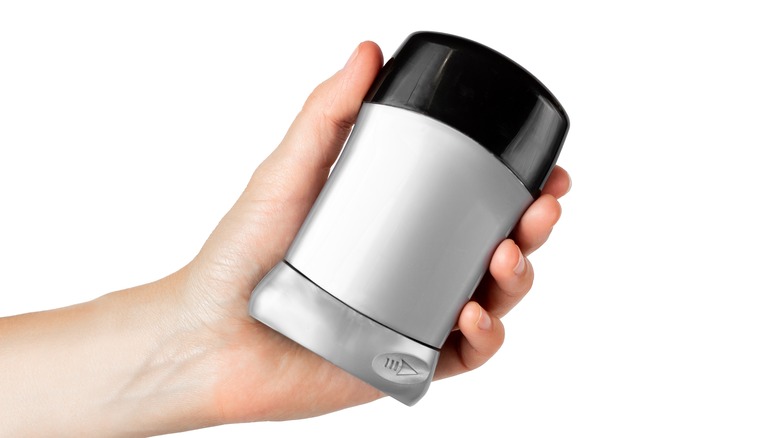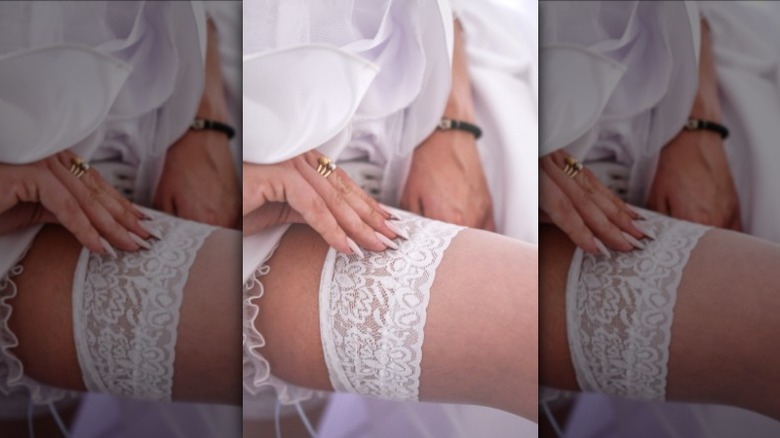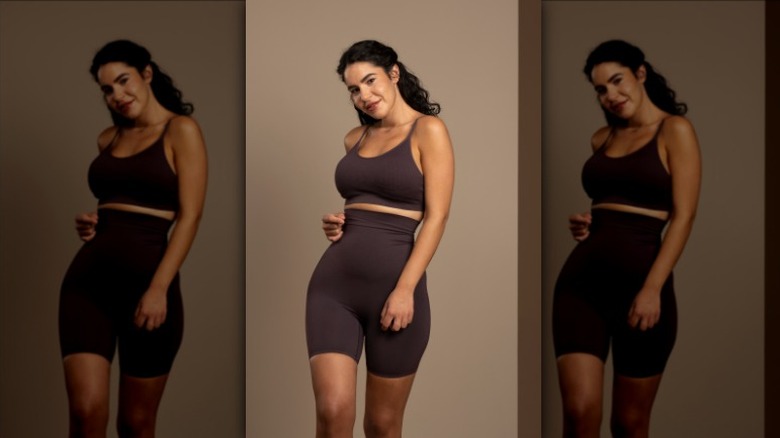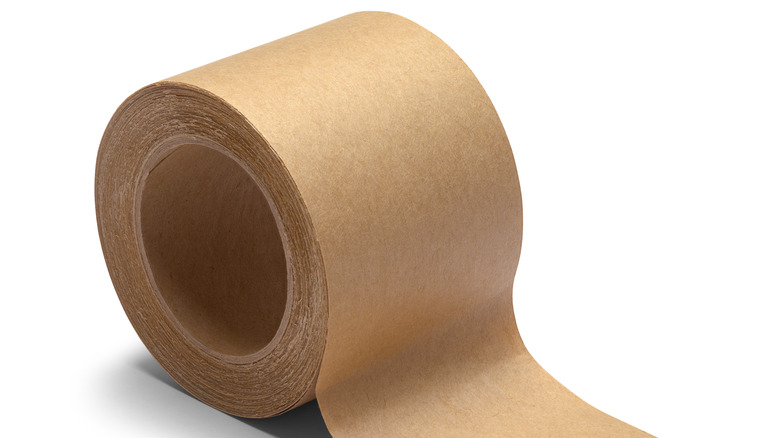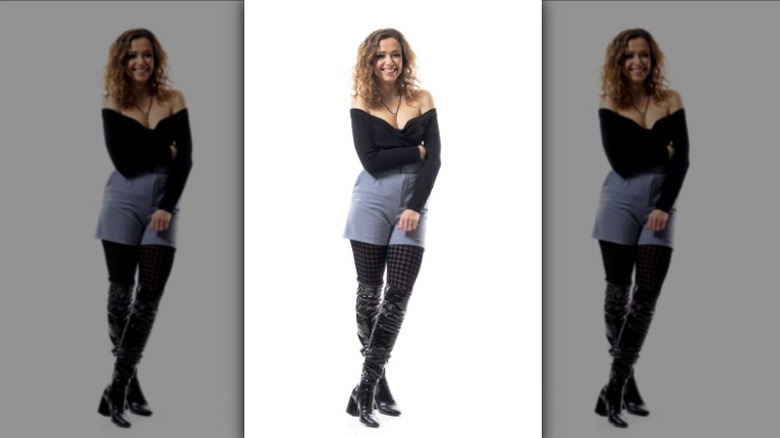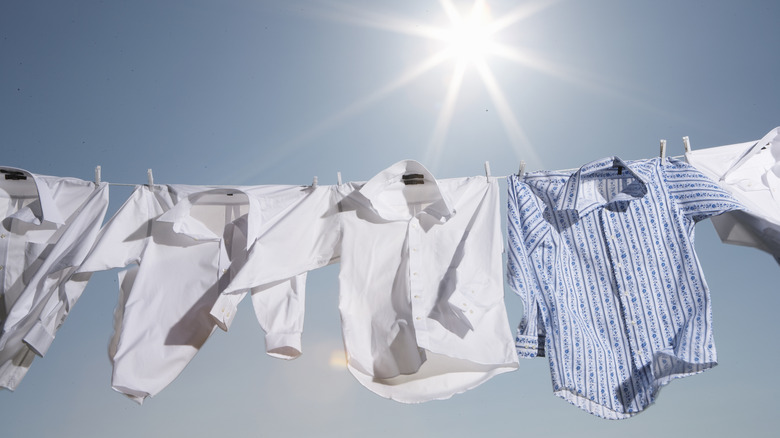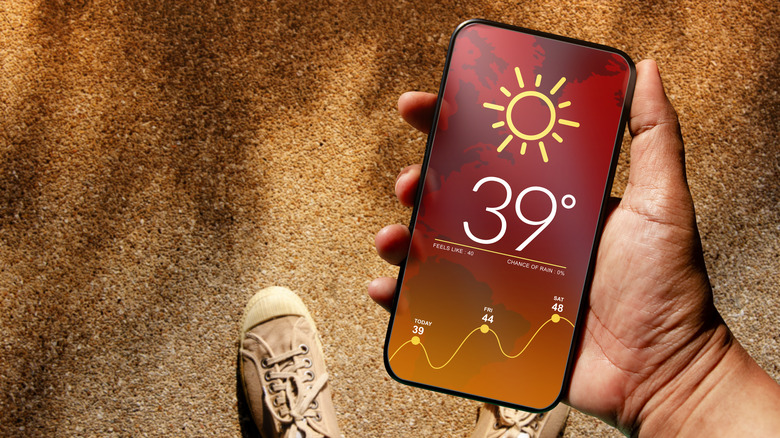Your Ultimate Guide To Preventing And Treating Thigh Chafing
If you've ever had a fun night ruined because of the uncomfortable sensation you started feeling between your thighs, you are not alone. Wearing a short dress or a miniskirt to a club, bar, or lounge shouldn't be something that makes you bat an eye or take a moment of hesitation. Unfortunately, too many people totally understand how uncomfortable it can be to wear an outfit that gives your thighs the chance to rub against each other. It's a bummer when you think you might've found the perfect skirt or dress to go out in with your friends, but you suddenly realize it probably wouldn't feel great to wear it because of the discomfort it will cause you halfway through the night.
The same issues pop up when you're getting ready for a day at the beach or the pool. If you spend too much time walking around in a bikini with your thighs rubbing together, you might begin to suffering from the unbearable sensation of chafing. Chafing isn't solely a skin-on-skin issue, either. It can also occur when you're wearing shorts and pants made of certain materials and fabrics. This is your ultimate guide to preventing and treating thigh chafing before it messes up any more of your most enjoyable moments.
What causes thigh chafing?
Chafing is something that can occur if your skin is repeatedly rubbing against something — such as your clothes, or another patch of skin — for an extended amount of time. According to Healthline, moisture on the skin can exacerbate this issue. So, if you're sweating while exercising or because it's a hot day, you may be more likely to wind up chafed.
Chafing is considered a skin condition since it negatively impacts the texture and health of your skin's surface. It's much different than other notable skin conditions such as psoriasis, eczema, acne, rosacea, or shingles. These skin conditions are typically diagnosed by a dermatologist since they continue giving you problems throughout the course of your life until you seek out the proper treatment. Chafing might not be as serious or urgent as any of those diagnoses, but it is still incredibly irritating and annoying to deal with.
How to tell if your skin is chafed
It's fairly easy to self-diagnose a chafing problem, whether it's between your thighs or somewhere else on your body. You don't always have to schedule an appointment with a dermatologist to examine an area if you know exactly what you're looking for. As Healthline notes, chafed skin can sting, burn, or feel completely sore to the touch. It may also itch, especially during the healing stages. There are also visual cues that signal you've run into a chafing issue. Chafed skin will look red, irritated, and chapped, and may appear as a rash of cracked and raised scaly patches. You may even develop blisters or lesions in the chafed area. Finally, if your chafing problem is recurrent, brown spots may form on the affected area. It's highly possible that you're dealing with the results of inner thigh chafing if you notice any of these pesky symptoms.
Use anti-chafing body glides
Anti-chafing body glides are some of the best products to consider using if you want to prevent your thighs from extreme discomfort next time you have big plans. There are several different brands to consider for people who are interested in this sort of product. The benefits of using anti-chafing body glides are that they tend to be enriched with vitamins and dry moisture to keep your skin as safe as possible.
Using anti-chafing body glide products is simple enough because all you have to do is rub the glide over the areas you're most concerned about. Depending on the glide you choose to try, some last longer than others, so keep that in mind when choosing your brand. You'll want to make sure that the glide you apply to your thighs at 6 p.m. will still be in place by the time you get home at midnight.
Use deodorant
Deodorant is another brilliant option to consider if you don't have an anti-chafing body glide and need to use something you already have on-hand. Deodorant is very similar to anti-chafing body glides, including the enriching vitamins you'll find in both. You can use a sweet smelling deodorant under your arms to continue smelling fresh all day, and you can use that same product between your thighs to prevent chafing. Applying a fresh coat of deodorant between your thighs before leaving your home is a beauty secret that has been passed around for many generations.
Tons of actresses, models, and socialites know about this trick because it leads to more comfortable experiences in public places. The only issue with using deodorant between your thighs to prevent chafing is that you'll have to continually reapply the deodorant as soon as it starts to wear off. If you have a purse in tow to carry your deodorant with you, then this shouldn't be a problem.
Wear thigh bands or garters
When you think of the garter, you might think of that one beautifully sultry piece of lingerie that brides tend to wear on their wedding day as part of an old-school tradition. It's time to start thinking of garters in a completely different light, though. Certain garters specially designed to combat thigh chafing are a fabulous item to wear if you want to protect your skin while feeling as confident and sexy as ever. If you're wearing a short dress and a glimpse of your garter is revealed, there's no reason to feel shy or embarrassed about that.
Thigh bands provide the same service as a garter, but they aren't always as gorgeous to admire. Garters tend to be made out of fabric that appears lacy or silky, or which has a floral pattern. Typical thigh bands are usually solid in color, whether that color is black, white, tan, or another neutral color. It's your prerogative if you want to opt for a garter or thigh band that isn't a neutral color at all, since there are plenty of rainbow options to choose from also.
Use anti-chafing patches and stickers
Skin-colored anti-chafing patches and stickers will get the job done if you want to make sure that your inner thighs won't rub together at any point during your day. The way anti-chafing patches work is very straightforward and uncomplicated: All you have to do is place a patch or sticker on your inner thigh. With a variety of colors to choose from, you should be able to find one in a tone that matches your natural complexion. If you only want to add a sticker to one side, you'll still get the protection you're looking for, or you can double down with a sticker on both thighs to really solidify your goal.
Anti-chafing patches and stickers tend to be oval or circle shaped straight out of the package. This doesn't mean you can't use a pair of scissors to cut them down into different sizes that suit you better. Anti-chafing patches that are cut into rectangles or squares can be just as effective with this type of issue.
Wear shapewear
Shapewear might possibly become your best friend if you've been struggling with thigh chafing issues for a while now. Shapewear is incredibly helpful for a multitude of reasons, starting with the fact that it helps slim down your figure if you plan to wear an outfit that's on the tighter side. Shapewear gives everyone the chance to create a more toned physique or hourglass shape, depending on the style they're going for.
People typically only wear shapewear when they're going to be wearing something over it that totally hides the shapeware from visible sight. There's nothing to be ashamed of when it comes to wearing shapewear, but it is usually something that's meant to remain hidden. For this reason, wearing shapeware to prevent thigh chafing isn't going to be super helpful for you at the beach or pool, but it works in many other scenarios. Wearing shapewear pieces that are long enough to cover your inner thighs will help prevent chafing since shapewear keeps you compressed and is tight enough that it won't move around and cause harmful friction. There are tons of popular shapeware brands to consider including Spanx, SKIMS by Kim Kardashian, and Yitty by Lizzo.
Use anti-chafing powder
If you want to prevent thigh chafing from occurring without depending on anything aside from a lightweight powder, anti-chafing powder might just be your best bet. The battle against chafing comes to an end if you're willing to sprinkle powerful talc-based powders, natural corn starch-based powders, or athletic spray powder to your inner thighs for true protection.
Powdered products can potentially help intimate areas of skin remain dry through the absorption of excess moisture. Corn starch is an incredible option because it rapidly soaks up any sign of wetness as soon as possible. General athletic spray powders are another possibility due to the fact that you can also make buying decisions based on your favorite fragrances. Just like using deodorant though, you might have to sprinkle additional anti-chafing powder between your thighs throughout the day or night if you feel like the effects are starting to wear off.
Body tape
Using body tape can be a total game-changer for people who are struggling with chafing on a serious level. Body tape is pretty similar to anti-chafing thigh patches and stickers, but it still stands alone as an item that is worth analyzing and investigating. Though body tape is often used for breast lifting and shaping, it can also be used elsewhere on the body to combat rubbing and chafing.
The reason body tape is so special is that it comes on a roll and can therefore be cut in any shape, size, or length that suits you and your needs. This means that if you want a strip of body tape that lays flat inside your inner leg from your knee to your groin, you can accomplish that. If you want a smaller square or rectangle that doesn't cover as many inches, you can easily do that too. Just like anti-chafing patches and stickers, you can buy body tape in any color that makes the most sense to you. It's typically sold in black, white, and other neutral tones.
Wear leggings, tights, or biker shorts
As fun and flirty as your favorite pair of shorts might be, it might be time to consider wearing leggings, tights, or biker shorts instead. The good news about wearing leggings and tights is that you can still wear your favorite pair of shorts over them while keeping your thighs totally protected.
Back in 2018, Kim Kardashian turned biker shorts into one of the most popular trends of the year. She was spotted rocking biker shorts in an assortment of colors while going everywhere from late-night McDonald's trips to the gym. Even though a lot of time has passed since biker shorts were at their height of popularity, it doesn't mean you can't still wear them today for your own personal comfort. Biker shorts are long enough to keep your thighs from rubbing together since they usually stop right above your knee caps.
It's crucial, though, that you pay attention to the fabric your leggings, tights, and biker shorts are made of. Bottoms that compress your thighs and keep moisture at bay are the most helpful when it comes to preventing chafing. Materials such as neoprene, microfiber, and Lycra are far more rubbery and resistant to heat compared to velvet, wool, or cotton.
Avoid wet clothing
One of the worst things you can do when trying to avoid by chafing is wearing wet pieces of clothing. Unfortunately, wet clothing simply makes any chafing between your thighs even worse than you'd imagine. If the jeans or leggings you wore on a trip to the lake accidentally got splashed with some water, it's in your best interest to avoid pulling them back onto your body until they've completely dried off.
When you wear clothing filled with moisture, it causes your skin to get even more irritated than before. This becomes an even grimmer issue when you take bacteria and infection into account. Germs absolutely thrive in moisture! If your thighs are chafing and the skin is starting to get chapped, the last thing you want is for a bad bacteria to seep into the vulnerable area due to the wetness of your clothing. As inconvenient as it sounds, hanging a clothing out to dry won't be something you'll regret in the long-haul.
Consider the weather
The weather is a huge factor to take into consideration if preventing thigh chafing is a big deal to you. If you decide to go for a jog in cold weather, you have to be cognizant of the fact that your skin is more liable to be dry and chapped. The more dry and chapped your thighs are, the easier it will be for chafing to occur. If you decide to go for a jog in hot weather, it's possible that your body will get a little hotter and sweatier than usual.
As mentioned before, we know that wet clothing and moisture is your worst enemy if you truly want to protect your thighs. This means that if you're wearing a pair of leggings or shorts that will easily fill with moisture between your thighs, you're putting yourself at risk for chafing. No matter where the temperature falls on the scale for you in your local area, it's important to take note of the ever-changing weather and prepare appropriately.
Keep chafed skin clean with gentle cleansing
Most people are fully aware of how important impeccable hygiene is. It goes without saying that making sure you take a cleansing shower after spending a day out in the world is beyond important for your personal well-being. That being said, it's also vital to note how paramount it is to thoroughly wash the skin between your thighs if you're already experiencing chafing. Soaping up the exterior of your body and hoping that sudsy bubbles and soapy water will roll in between your thighs to hit the right places simply isn't enough.
Taking the time to thoroughly clean the affected areas of skin on your thighs is an absolute necessity. Chafed skin is broken skin, which means it's easy for these areas to get infected if they aren't taken care of properly. You won't want to swab down your chafed inner thighs with a porous loofah or handful of sugar scrub, but you certainly should gently cleanse with normal body wash or soap.
Apply healing creams, ointments, and gels
If the damage has already been done and you're already dealing with chafed skin on your thighs, you can help ease your discomfort by applying healing creams, appointments, and gels. Healing creams come in handy no matter what type of ailment you're struggling with. If you have a paper cut from filing documents or a bruise from running into the corner of a table, these creams can make a huge difference on your healing journey. That being said, these are the same types of products you can depend on between your thighs after you've already started experiencing chafing.
It's best to apply healing treatments to affected areas after you're done moving around for the day and you've completely cleaned your skin in a bath or shower. If you're able to comfortably lie down on a sofa or bed with a healing treatment over the chafed areas on your thighs, you'll give them the opportunity to recover quicker. The sooner your thighs are healed up, the sooner you can return to a fun and carefree experience without worrying about pain or discomfort.
Aloe treats chafed skin by providing a soothing and cooling sensation. Shea butter eases irritation with its powerful anti-inflammatory substances. Polysporin is affordable and used to block skin infections from festering in chafed skin. Vaseline works to protect sensitive areas while speeding along the healing process of broken skin. All of these products can be purchased over-the-counter.
